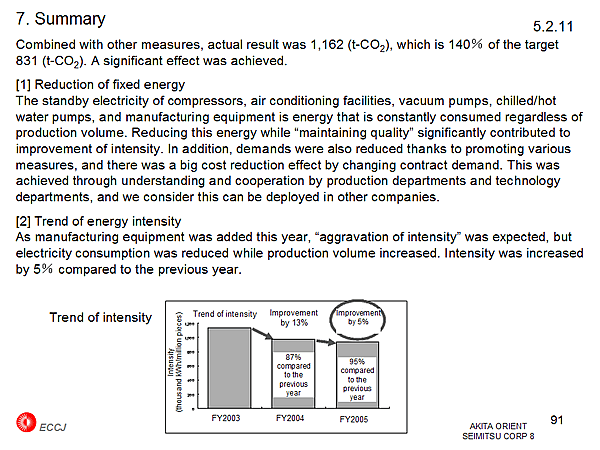- [3] Visualization
Briefing sessions were held on developments and achievements of measures on a case-by-case basis. In addition, information was “visualized” by publishing on LAN and posting on the bulletin board on corridor walls, so that anyone can understand the progress.
[4] On-site investigation, management manual, and standards of judgment
When improving/reviewing management manual based on on-site investigations, it is necessary to deeply understand and enforce of “Standards of Judgment”. Collection and analysis of data by “measurement and record” and “stopping when unnecessary”, etc. were extremely useful. In addition, by taking an on-site investigation, awareness of “Energy Conservation Act” was even raised and deployment of activities of this case was enabled.
|

